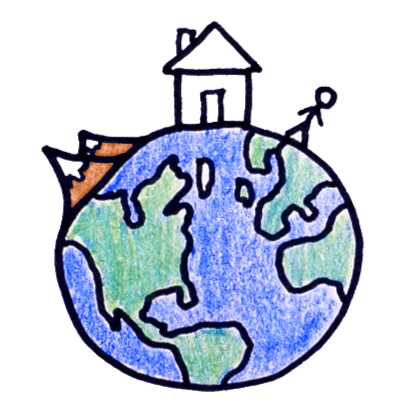2021-05-04
[public] 362K views, 50.6K likes, dislikes audio only
Humans are the only animals known to faint due to triggers like shock, fear, or pain; this is due to a combination of our massive brains and upright stance.
LEARN MORE
**************
To learn more about this topic, start your googling with these keywords:
"Fight or flight": an instinctive physiological response to a threatening situation that readies animals (including humans) to either resist forcibly or escape
Fainting: loss of consciousness caused by a temporary lack of oxygen to the brain, also known as “syncope.”
Vasovagal syncope: a type of fainting that happens when your body overreacts to an emotional trigger like being in danger, seeing blood, or even just hearing some shocking news.
Tonic immobility: an instinctive physiological response to a threatening situation that causes some animals to relax their muscles and “freeze” in place, sometimes causing them to fall over
Jump scare: a technique often used in horror films meant to scare the audience with a sudden change on screen, usually paired with a loud sound
SUPPORT MINUTEEARTH
**************************
If you like what we do, you can help us!:
- Become our patron: https://patreon.com/MinuteEarth
- Share this video with your friends and family
- Leave us a comment (we read them!)
CREDITS
*********
Julián Gustavo Gómez | Script Writer, Narrator, and Director
Josh Taira | Illustration, Video Editing, and Animation
Nathaniel Schroeder | Music
MinuteEarth is produced by Neptune Studios LLC
OUR STAFF
************
Sarah Berman • Arcadi Garcia Rius
David Goldenberg • Julián Gustavo Gómez
Melissa Hayes • Alex Reich • Henry Reich
Peter Reich • Ever Salazar • Kate Yoshida
OTHER CREDITS
*****************
Piano Jump Scare Stinger by TheSoundFXGuy_YT of freesound.org
https://freesound.org/people/TheSoundFXGuy_YT/sounds/534218/
Licensed under CC BY 3.0 https://creativecommons.org/licenses/by/3.0/
OUR LINKS
************
Youtube | https://youtube.com/MinuteEarth
TikTok | https://tiktok.com/@minuteearth
Twitter | https://twitter.com/MinuteEarth
Instagram | https://instagram.com/minute_earth
Facebook | https://facebook.com/Minuteearth
Website | https://minuteearth.com
Apple Podcasts| https://podcasts.apple.com/us/podcast/minuteearth/id649211176
REFERENCES
**************
Alboni, Paolo, and Marco Alboni. "Origin and Evolution of the Vasovagal Reflex." Vasovagal Syncope. Springer, Cham, 2015. 3-17.
Alboni, P., Alboni, M. “Typical vasovagal syncope as a “defense mechanism” for the heart by contrasting sympathetic overactivity.” Clin Auton Res 27, 253–261 (2017). https://doi.org/10.1007/s10286-017-0446-2
Blanc, Jean-Jacques, Paolo Alboni, and David G. Benditt. "Vasovagal syncope in humans and protective reactions in animals." Ep Europace 17.3 (2015): 345-349.
Bracha, H., Bienvenu, O. & Person, D. “Evolution and fear-fainting.” Clin Auton Res 16, 299 (2006). https://doi.org/10.1007/s10286-006-0359-y
Buckey JC, Peshock RM, Blomqvist CG. “Deep venous contribution to hydrostatic blood volume change in the human leg.” Am J Cardiol. 1988 Sep 1;62(7):449-53. https://doi.org/10.1016/0002-9149(88)90976-9.
Furst, Branko. "The Effect of Gravity and Upright Posture on Circulation." The Heart and Circulation. Springer, Cham, 2020. 319-341.
Kozlowska K, Walker P, McLean L, Carrive P. “Fear and the Defense Cascade: Clinical Implications and Management.” Harv Rev Psychiatry. 2015 Jul-Aug;23(4):263-87. https://doi.org/10.1097/HRP.0000000000000065.
Roelofs, Karin. "Freeze for action: neurobiological mechanisms in animal and human freezing." Philosophical Transactions of the Royal Society B: Biological Sciences 372.1718 (2017): 20160206.
Sheldon, Robert S., and Roopinder K. Sandhu. "The search for the genes of vasovagal syncope." Frontiers in cardiovascular medicine 6 (2019): 175.
Sun, Benjamin C., Jennifer A. Emond, and Carlos A. Camargo Jr. "Direct medical costs of syncope-related hospitalizations in the United States." The American journal of cardiology 95.5 (2005): 668-671.
van Dijk JG. “Fainting in animals.” Clin Auton Res. 2003 Aug;13(4):247-55. https://doi.org/10.1007/s10286-003-0099-1.
https://www.patreon.com/minuteearth
/youtube/channel/UCeiYXex_fwgYDonaTcSIk6w
https://patreon.com/minuteearth
/youtube/video/4DF94Wvtekk

